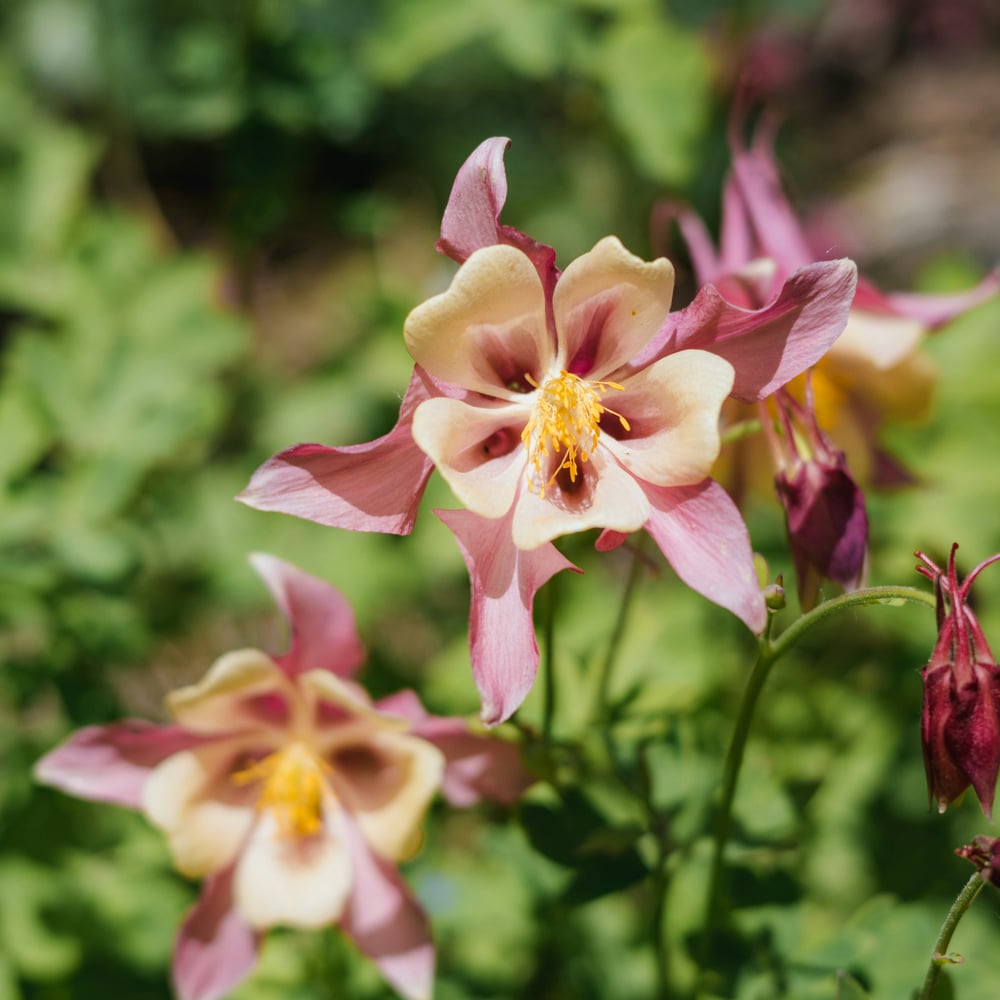Colorado’s State Flower: The Rocky Mountain Columbine
 Colorado’s State Flower: The Rocky Mountain Columbine
Colorado’s State Flower: The Rocky Mountain Columbine
Meet Columbine
Welcome to the fascinating world of Colorado's state flower, the Rocky Mountain columbine. This enormous bloom encapsulates the spirit of the state's vibrant population and breathtaking natural beauty. With its stunning blue and white petals, this flower epitomizes the spirit of exploration and Colorado's wild beauty. Let's discover Colorado's splendor and reveal that the columbine is more than simply a flower. it's a representation of the state's long history and endearing nature!
History and Why It Was Chosen as a State Flower
Rocky Mountain Columbine History
The Rocky Mountain columbine, chosen as Colorado’s state flower on April 4, 1899, holds a special place in the state's history. Its selection was motivated by the flower's distinctive beauty and profusion in Colorado's mountainous regions. The columbine was chosen over other nominees because it best represents Colorado's natural majesty and the rugged beauty of the Rocky Mountains. Its fragile yet tenacious nature reflects the state's ability to thrive in different and tough environments.
State Flower Choice
The Rocky Mountain columbine was chosen for its close relationship to Colorado's surroundings and cultural character. Given the state's reputation for spectacular scenery, the flower's arresting look and adaptation to the high altitude terrain fit it. The columbine’s selection highlights Colorado’s pride in its natural beauty and the spirit of its people, symbolizing the state’s strength and resilience.
 Biological Information
Biological Information
The Aquilegia coerulea, or Rocky Mountain columbine, is a member of the Ranunculaceae family of flowers. The white and blue (or purple and pink) blossoms of this perennial wildflower are famously beautiful. The ideal conditions for its growth are full sun to moderate shade and soils that drain well. Common in Colorado's mountainous areas, the columbine blossoms on the rich, alpine soils and colder temperatures of the Rocky Mountains.
Blooming Period
The Rocky Mountain columbine typically blooms from late spring to early summer, with peak flowering occurring between June and July. The timing of its bloom is influenced by the high-altitude climate of Colorado, where snowmelt and cooler temperatures create an ideal environment for this beautiful flower. The columbine’s blooms last for several weeks, providing a splash of color against the rugged mountain backdrop.
Meaning, Symbolism, and Representation
The Colorado rock columbine is very important to the state. It shows how beautiful, strong, and unique the state's rough environment is. The flower is linked to bravery and power, which is a good representation of how strong Colorado residents are. The columbine is a prominent motif in local art and events, symbolizing Colorado's natural beauty and cultural legacy.
This flower not only enhances the natural landscapes of Colorado but also reflects the state’s identity and values. Its presence in the wildflower meadows and gardens of Colorado underscores its importance in the state’s cultural and natural heritage.
Rocky Mountain Columbine: A Symbol of Colorado’s Majesty
The Rocky Mountain columbine is a stunning representation of Colorado's natural splendor and rough surroundings. Its fragile yet durable blossoms are reminiscent of the state's spectacular alpine environment and the tenacious character of its people. Each spring and summer, we appreciate this bloom, celebrating Colorado's bright vitality and rich natural heritage.
Get Your Flowers for Delivery in Colorado
Colorado’s State Flower FAQ
What is the Rocky Mountain Columbine, and why is it important to Colorado?
The Rocky Mountain columbine was made Colorado's official state flower on April 4, 1899. It was picked because of its unique beauty and wide distribution in Colorado's hilly areas. This flower represents the rough beauty of the state's nature and the strong will of its people. Its bright blue and white petals look like the beautiful Rocky Mountains and show how proud the state is of its unique environment.
When did the Rocky Mountain columbine become Colorado’s state flower, and what influenced the decision?
The Rocky Mountain columbine was made Colorado's official state flower on April 4, 1899. It was picked because of its unique beauty and wide distribution in Colorado's hilly areas. This flower represents the rough beauty of the state's nature and the strong will of its people. Its bright blue and white petals look like the beautiful Rocky Mountains and show how proud the state is of its unique environment.
What are the ideal growing conditions for the Rocky Mountain columbine?
Rocky Mountain columbine does best in soils that drain well and likes full sun over partial shade. It does well in high-altitude areas of Colorado, where the cooler temps and rich, alpine soils of the Rockies are ideal. The flower has adapted to the unique yearly changes in the state, such as melting snow and mild summers. These conditions help the columbine grow well and show off its bright flowers well.
When does the Rocky Mountain columbine typically bloom, and what factors influence its blooming period?
The Rocky Mountain columbine usually blooms all the way through early summer, but the best months are June and July. Colorado's high-altitude climate changes two things that affect its growing season: when the snow melts and when the weather gets warmer in the spring. Adding a splash of color to the mountainous vistas of Colorado during this season, the columbine blossoms can endure for weeks.
What does the Rocky Mountain columbine symbolize, and how is it represented in Colorado’s culture?
The Rocky Mountain columbine symbolizes beauty, resilience, and the rugged character of Colorado's natural landscape. It symbolizes the resilience and determination of the inhabitants of the state, mirroring the difficulties and benefits of living in a mountainous ecosystem. The columbine is prominently showcased in local art, festivals, and cultural events, commemorating Colorado's natural legacy and its vital role in representing the state's lively essence and character.











